- Home
- Connie Willis
A Lot Like Christmas: Stories
A Lot Like Christmas: Stories Read online
A Lot Like Christmas is a work of fiction. Names, characters, places, and incidents either are the product of the author’s imagination or are used fictitiously. Any resemblance to actual persons, living or dead, events, or locales is entirely coincidental.
Copyright © 2017 by Connie Willis
All rights reserved.
Published in the United States by Del Rey, an imprint of Random House, a division of Penguin Random House LLC, New York.
DEL REY and the HOUSE colophon are registered trademarks of Penguin Random House LLC.
This is an expanded edition of Miracle and Other Christmas Stories by Connie Willis (New York: Bantam Spectra, 1999), copyright © 1999 by Connie Willis.
The stories that appear in this work have been previously published and are reprinted here by permission of the author: “Miracle” in Asimov’s, December 1991, copyright © 1991 by Doubleday Dell Magazines; “All About Emily” (Burton, MI: Subterranean Press, 2011), copyright © 2011 by Connie Willis; “Inn” in Asimov’s, December 1993, copyright © 1993 by Doubleday Dell Magazines; “All Seated on the Ground” in Asimov’s, December 2007, copyright © 2007 by Dell Magazines, a division of Crosstown Publishing; “In Coppelius’s Toyshop” in Asimov’s, December 1996, copyright © 1996 by Dell Magazines, a division of Crosstown Publishing; “Adaptation” in Asimov’s, December 1994, copyright © 1994 by Doubleday Dell Magazines; “deck.halls@boughs/holly” in Asimov’s, December 2001, copyright © 2001 by Dell Magazines, a division of Crosstown Publishing; “Cat’s Paw” in Miracle and Other Christmas Stories (New York: Bantam Spectra, 1999), copyright © 1999 by Connie Willis; “Now Showing” in Rogues, edited by George R. R. Martin and Gardner Dozois (New York: Bantam Books, 2014), copyright © 2014 by Connie Willis; “Newsletter” in Asimov’s, December 1997, copyright © 1997 by Dell Magazines, a division of Crosstown Publishing; “Epiphany” in Miracle and Other Christmas Stories (New York: Bantam Spectra, 1999), copyright © 1999 by Connie Willis; “Just Like the Ones We Used to Know” in Asimov’s, 2003, copyright © 2003 by Dell Magazines, a division of Crosstown Publishing.
ISBN 9780399182341
Ebook ISBN 9780399182358
randomhousebooks.com
Book design by Virginia Norey, adapted for ebook
Cover design and illustration: Black Kat Design. based on photographs © iStockphoto (tree and ornaments) and © Shutterstock (spaceship ornament)
v4.1
ep
Contents
Cover
Title Page
Copyright
Introduction
Miracle
All About Emily
Inn
All Seated on the Ground
In Coppelius’s Toyshop
Adaptation
deck.halls@boughs/holly
Cat’s Paw
Now Showing
Newsletter
Epiphany
Just Like the Ones We Used to Know
A Final Word on the Subject
An Advent Calendar of Great Christmas Movies to Watch (in No Particular Order)
And a Score of Christmas Stories and Poems to Read After You’ve Gone to Bed
Plus a Half-Dozen TV Shows You May Not Have Seen That Haven’t Succumbed to “Very-Special-Christmas-Episode” Syndrome
Dedication
By Connie Willis
About the Author
I love Christmas. All of it—decorating the tree and singing in the choir and baking cookies and wrapping presents. I even like the parts most people hate—shopping in crowded malls and reading Christmas newsletters and seeing relatives and standing in baggage check-in lines at the airport.
Okay, I lied. Nobody likes standing in baggage check-in lines. I love seeing people get off the plane, though, and holly and candles and eggnog and carols.
But most of all, I love Christmas stories and movies. Okay, I lied again. I don’t love all Christmas stories and movies. It’s a Wonderful Life, for instance. And Hans Christian Andersen’s “The Fir Tree.”
But I love Miracle on 34th Street and Christopher Morley’s “The Tree That Didn’t Get Trimmed” and Christina Rossetti’s poem “In the Bleak Midwinter.” My family watches The Sure Thing and A Christmas Story each year, and we read George V. Higgins’s “The Impossible Snowsuit of Christmas Past” out loud every Christmas Eve, and eagerly look for new classics to add to our traditions.
There aren’t a lot. This is because Christmas stories are much harder to write than they look, partly because the subject matter is fairly limited, and people have been writing it for nearly two thousand years, so they’ve just about rung all the changes possible on snowmen, Santas, and shepherds.
Stories have been told from the point of view of the fourth wise man (who got waylaid on the way to Bethlehem), the innkeeper, the innkeeper’s wife, the donkey, and the star. There’ve been stories about department-store Santas, phony Santas, burned-out Santas, substitute Santas, reluctant Santas, and dieting Santas, to say nothing of Santa’s wife, his elves, his reindeer, and Rudolph. We’ve had births at Christmas (natch!), deaths, partings, meetings, mayhem, attempted suicides, and sanity hearings. And Christmas in Hawaii, in China, in the past, the future, and outer space. We’ve heard from the littlest shepherd, the littlest wise man, the littlest angel, and the mouse who wasn’t stirring. There’s not a lot out there that hasn’t already been done.
In addition, the Christmas-story writer has to walk a narrow tightrope between sentiment and skepticism, and most writers end up falling off into either cynicism or mawkish sappiness.
And, yes, I am talking about Hans Christian Andersen. He invented the whole three-hanky sob story, whose plot Maxim Gorky, in a fit of pique, described as taking a poor girl or boy and letting them “freeze somewhere under a window, behind which there is usually a Christmas tree that throws its radiant splendor upon them.” Match girls, steadfast tin soldiers, even snowmen (melted, not frozen) all met with a fate they (and we) didn’t deserve, especially at Christmas.
Nobody, before Andersen came along, had thought of writing such depressing Christmas stories. Even Dickens, who had killed a fair number of children in his books, didn’t kill Tiny Tim. But Andersen, apparently hell-bent on ruining everybody’s holidays, froze innocent children, melted loyal toys into lumps of lead, and chopped harmless fir trees who were just standing there in the forest, minding their own business, into kindling.
Worse, he inspired dozens of imitators, who killed off saintly children (some of whom, I’ll admit, were pretty insufferable and deserved to die) and poor people for the rest of the Victorian era.
In the twentieth century, the Andersen-style tearjerker moved into the movies, which starred Margaret O’Brien (who definitely deserved to die) and other child stars, chosen for their pallor and their ability to cough. They had titles like All Mine to Give and The Christmas Tree, which tricked hapless moviegoers into thinking they were going to see a cheery Christmas movie, when really they were about little boys who succumbed to radiation poisoning on Christmas Eve.
When television came along, this type of story turned into the “Very Special Christmas Episode” of various TV shows, the worst of which was Little House on the Prairie, which killed off huge numbers of children in blizzards and other pioneer-type disasters every Christmas for years. Hadn’t any of these authors ever heard that Christmas stories are supposed to have happy endings?
Well, unfortunately, they had, and it resulted in improbably sentimental and saccharine stories too numerous to mention.
So are there any good Christmas stories out there? You bet, starting with the original. The recounting of the first Christmas (you know, the baby in the manger) has all the elements of great s
torytelling: drama, danger, special effects, dreams and warnings, betrayals, narrow escapes, and—combined with the Easter story—the happiest ending of all.
And it’s got great characters—Joseph, who’s in over his head but doing the best he can; the wise men, expecting a palace and getting a stable; slimy Herod, telling them, “When you find this king, tell me where he is so I can come and worship him,” and then sending out his thugs to try to murder the baby; the ambivalent innkeeper. And Mary, fourteen years old, pondering all of the above in her heart. It’s a great story. No wonder it’s lasted two thousand years.
Modern Christmas stories I love (for a more complete list, see the end of this book) include O. Henry’s “The Gift of the Magi,” T. S. Eliot’s “Journey of the Magi,” and Barbara Robinson’s The Best Christmas Pageant Ever, about a church Nativity pageant overrun by a gang of hooligans called the Herdmans. The Herdmans bully everybody and smoke and cuss and come only because they’d heard there were refreshments afterward. And they transform what was a sedate and boring Christmas pageant into something extraordinary.
Since I’m a science-fiction writer, I’m of course partial to science-fiction Christmas stories. Science fiction has always had the ability to make us look at the world from a different angle, and Christmas is no exception. Science fiction has looked at the first Christmas from a new perspective (Michael Moorcock’s classic Behold the Man) and in a new guise (Joe L. Hensley and Alexei Panshin’s “Dark Conception”).
It’s shown us Christmas in the future (Cynthia Felice’s “Track of a Legend”) and Christmas in space (Ray Bradbury’s wonderful “The Gift”). And it’s looked at the dark side of Christmas (Mildred Clingerman’s disturbing “The Wild Wood”).
My favorite science-fiction Christmas stories are Arthur C. Clarke’s “The Star,” which tells the story of the Christmas star that guided the wise men to Bethlehem, and Thomas Disch’s hilarious story “The Santa Claus Compromise,” in which two intrepid six-year-old investigative reporters expose the shocking scandal behind Santa Claus.
I also love mysteries. You’d think murder and Christmas wouldn’t mesh, but the setting and the possibility of mistletoe/plum pudding/Santa Claus–connected murders has inspired any number of mystery writers, starting with Arthur Conan Doyle and his “The Adventure of the Blue Carbuncle,” which involves a Christmas goose. Some of my favorite mysteries are Dorothy Sayers’s “The Necklace of Pearls,” Agatha Christie’s Murder for Christmas, and Jane Langton’s The Shortest Day: Murder at the Revels. My absolute favorite is John Mortimer’s comic “Rumpole and the Spirit of Christmas,” which stars the grumpy old Scrooge of a barrister, Horace Rumpole, and his wonderful wife, She Who Must Be Obeyed.
Comedies are probably my favorite kind of Christmas story. I love Damon Runyon’s “Dancing Dan’s Christmas.” (Actually, I love everything Damon Runyon ever wrote, and if you’ve never read him, you need to go get Guys and Dolls immediately. Ditto P. G. Wodehouse, whose “Jeeves and the Yule-tide Spirit” and “Another Christmas Carol” are vintage Wodehouse, which means they’re indescribable. If you’ve never read Wodehouse either, what a treat you’re in for! He wrote over a hundred books. Start anywhere.) Both Runyon and Wodehouse balance sentiment and cynicism, irony and the Christmas spirit, human nature and happy endings, without a single misstep.
And then there’s Christopher Morley’s “The Tree That Didn’t Get Trimmed,” which was clearly written in reaction to Hans Christian Andersen’s “The Fir Tree.” Unlike Andersen, however, Morley understands that the purpose of Christmas is to remind us not only of suffering but of salvation. His story makes you ache, and then despair. And then rejoice.
Almost all great stories (Christmas or otherwise) have that one terrible moment when all seems lost, when you’re sure things won’t work out, the bad guys will win, the cavalry won’t arrive in time, and they (and we) won’t be saved. John Ford’s Christmas Western, 3 Godfathers, has a moment like that. So does The Miracle of Morgan’s Creek, and Miracle on 34th Street, which I consider to be The Best Christmas Movie Ever.
I know, I know, It’s a Wonderful Life is supposed to be The Best Christmas Movie Ever, with ten million showings and accompanying merchandising. (I saw an It’s a Wonderful Life mouse pad this last Christmas.) And I’m not denying that there are some great scenes in it (see my story “Miracle” on this subject), but the movie has real problems. For one thing, the villainous Mr. Potter is still loose and unpunished at the end of the movie, something no good fairy tale ever permits. The dreadful little psychologist in Miracle on 34th Street is summarily, and very appropriately, fired, and the DA, who after all was only doing his job, repents.
But in It’s a Wonderful Life, Mr. Potter is free, with his villainy undetected, though he’s already proved to be a vindictive and malicious villain. Since this didn’t work, he’ll obviously try something else. And poor George is still faced with embezzlement charges, which the last time I looked don’t disappear just because you pay back the money, even if the cop is smiling in the last scene.
But the worst problem seems to me to be that the ending depends on the goodness of the people of Bedford Falls, something that (especially in light of previous events) seems like a dicey proposition.
Miracle on 34th Street, on the other hand, relies on no such thing. The irony of the miracle (and let’s face it, maybe what really galls my soul is that It’s a Wonderful Life is a work completely without irony) is that the miracle happens not because of people’s behavior, but in spite of it.
Christmas is supposed to be based on selflessness and innocence, but until the very end of Miracle on 34th Street, virtually no one except Kris Kringle exhibits these qualities. Quite the opposite. Everyone, even the hero and heroine, acts from a cynical, very modern self-interest. Macy’s Santa goes on a binge right before Macy’s Thanksgiving Day Parade, Doris hires Kris to get herself out of a jam and save her job, John Payne invites the little girl Susan to watch the parade as a way to meet the mother.
And in spite of Kris Kringle’s determined efforts to restore the true spirit of Christmas to the city, it continues. Macy’s and then Gimbel’s go along with the gag of recommending other stores, not because they believe in it, but because it means more money. The judge in Kris’s sanity case makes favorable rulings only because he wants to get reelected. Even the postal workers who provide the denouement just want to get rid of stuff piling up in the dead-letter office.
But in spite of this (actually, in a delicious irony, because of it) and with only very faint glimmerings of humanity from the principals, and in spite of how hopeless it all seems, the miracle of Christmas occurs, right on schedule. Just as it does every year.
It’s this layer of symbolism that makes Miracle on 34th Street such a satisfying movie. Also its script (by George Seaton) and perfect casting (especially Natalie Wood and Thelma Ritter) and any number of delightful moments (Santa’s singing a Dutch carol to the little Dutch orphan and the disastrous bubble-gum episode and Natalie Wood’s disgusted expression when she’s told she has to have faith even when things don’t work out). Plus, of course, the fact that Edmund Gwenn could make anyone believe in Santa Claus. All combine to make it The Best Christmas Movie Ever Made.
Not, however, the best story. That honor belongs to Dickens and his deathless A Christmas Carol. The rumor that Dickens invented Christmas is not true, and neither, probably, is the story that when he died, a poor costermonger’s little girl sobbed, “Dickens dead? Why, then, is Christmas dead, too?” But they should be.
Because Dickens did the impossible—he wrote not only a masterpiece that captures the essence of Christmas, but one that was good enough to survive its own fame. There have been a million mostly awful TV, movie, and musical versions and variations, with Scrooge played by everybody from Basil Rathbone to the Fonz, but even the worst of them haven’t managed to damage the wonderful story of Scrooge and Tiny Tim.
One reason it’s such a great story is that Dickens loved Christma
s. (And no wonder. His childhood was Oliver Twist’s and Little Dorrit’s combined, and no kindly grandfather or Arthur Clennam in sight. His whole adult life must have seemed like Christmas.) I think you have to love Christmas to write about it.
For another, he knew a lot about human nature. Remembering the past, truly seeing the present, imagining the consequences of our actions, are the ways we actually grow and change. Dickens knew this years before Freud.
He also knew a lot about writing. The plot’s terrific, the dialogue’s great, and the opening line—“Marley was dead: to begin with”—is second only to “Call me Ishmael” as one of the great opening lines of literature. He knew how to end stories, too, and that Christmas stories were supposed to have happy endings.
Finally, the story touches us because we want to believe people can change. They don’t. We’ve all learned from bitter experience (though probably not as bitter as Dickens’s) that the world is full of money-grubbers and curtain-ring stealers, that Scrooge stays Scrooge to the bitter end, and nobody will lift a finger to help Tiny Tim.
But Christmas is about someone who believed, in spite of overwhelming evidence, that humanity is capable of change and worth redeeming. And Dickens’s Christmas story is in fact The Christmas Story. And the hardened heart that cracks open at the end of it is our own.
If I sound passionate (and sometimes curmudgeonly) about Christmas stories, I am. I love Christmas, in all its complexity and irony, and I love Christmas stories.
So much so that I’ve been writing them for years. Here they are—an assortment of stories about church choirs and Christmas presents and pod people from outer space, about wishes that come true in ways you don’t expect and wishes that don’t come true and wishes you didn’t know you had, about stars and shepherds, wise men and Santa Claus, mistletoe and It’s a Wonderful Life and Christmas cards on recycled paper. There’s even a murder. And a story about Christmas Yet to Come.

 Passage
Passage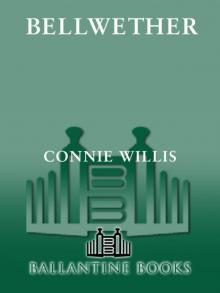 Bellwether
Bellwether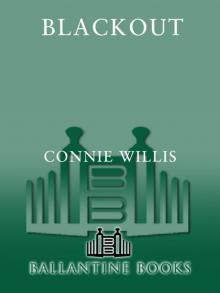 Blackout
Blackout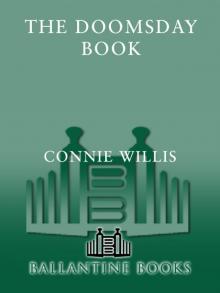 Doomsday Book
Doomsday Book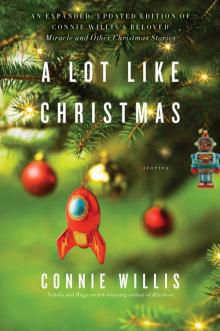 A Lot Like Christmas: Stories
A Lot Like Christmas: Stories Water Witch
Water Witch To Say Nothing of the Dog
To Say Nothing of the Dog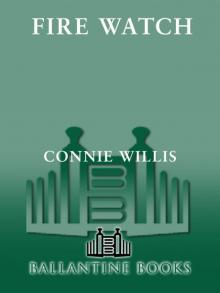 Fire Watch
Fire Watch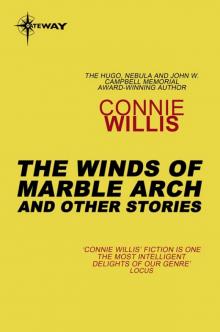 The Winds of Marble Arch and Other Stories
The Winds of Marble Arch and Other Stories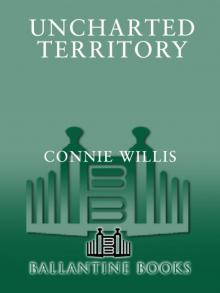 Uncharted Territory
Uncharted Territory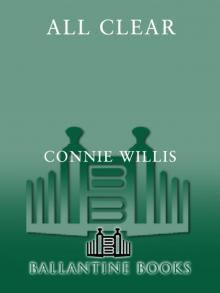 All Clear
All Clear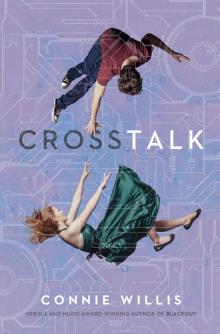 Crosstalk
Crosstalk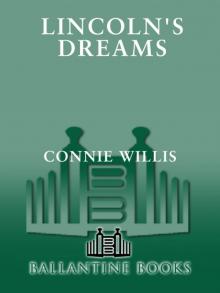 Lincoln's Dreams
Lincoln's Dreams Miracle and Other Christmas Stories
Miracle and Other Christmas Stories Time is the Fire
Time is the Fire Blackout ac-1
Blackout ac-1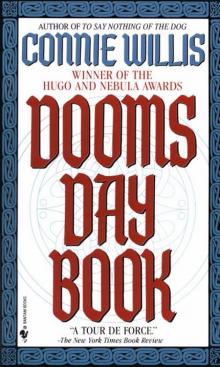 Dooms Day Book
Dooms Day Book Jack
Jack The Doomsday Book
The Doomsday Book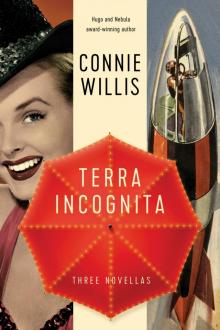 Terra Incognita
Terra Incognita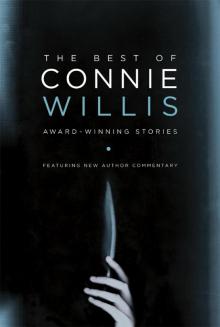 The Best of Connie Willis
The Best of Connie Willis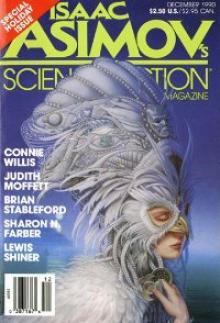 Cibola
Cibola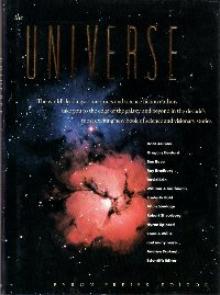 Schwarzschild Radius
Schwarzschild Radius Even the Queen
Even the Queen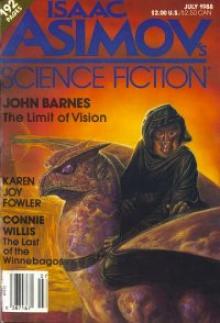 The Last of the Winnebagos
The Last of the Winnebagos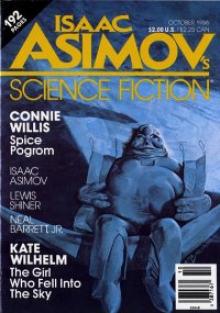 Spice Pogrom
Spice Pogrom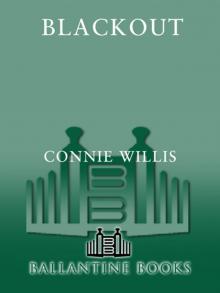 Oxford Time Travel 1 - Blackout
Oxford Time Travel 1 - Blackout At The Rialto
At The Rialto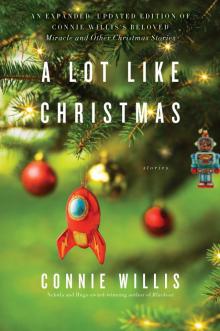 A Lot Like Christmas
A Lot Like Christmas